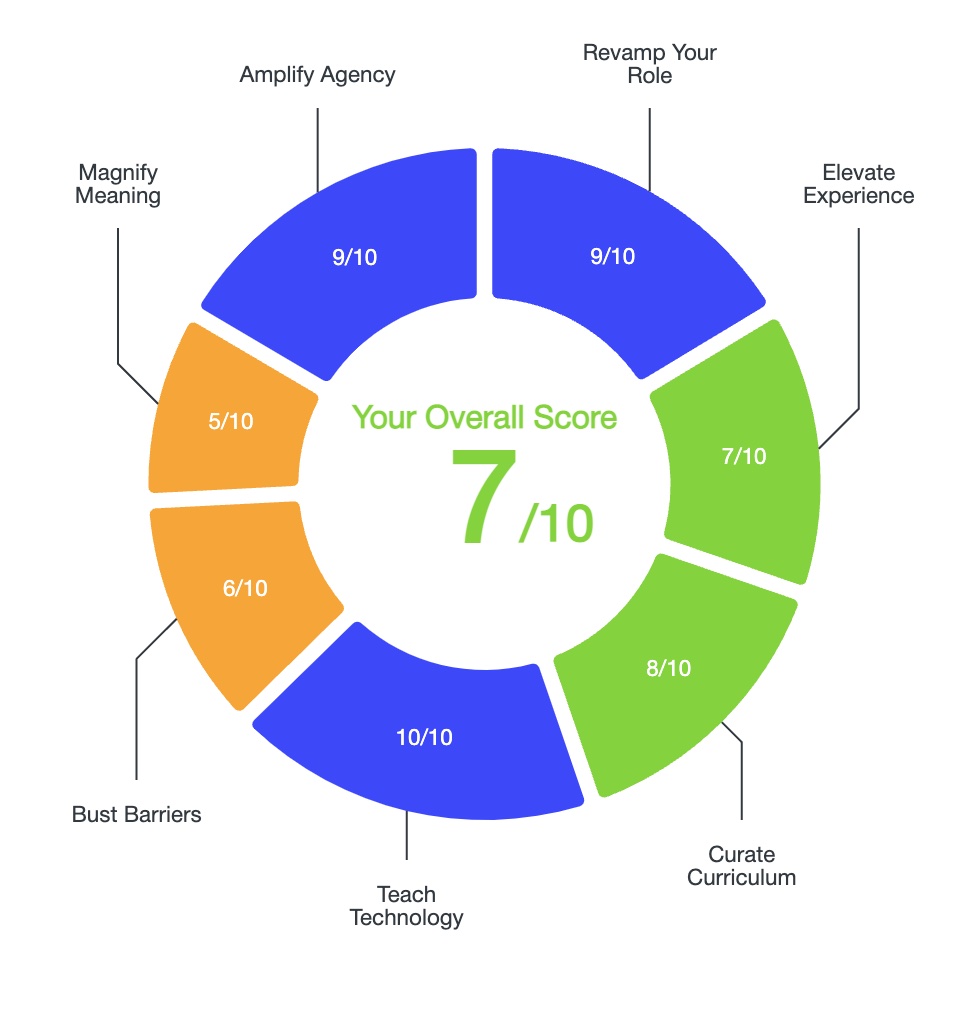Actively Learn helps teachers make virtually any piece of content interactive, be it a video, a web page, article, or pdf, and it’s a perfect example of how technology can be used to transform instruction and improve learning experiences for students.
Watch the video or read the following post to learn everything you need to know about how to make all your content interactive with Actively Learn!
The Actively Learn Student Experience
First let’s look at what the student experience is like in Actively Learn.
When students are assigned articles in Actively Learn, they’ll see questions directly embedded within the text as opposed to just showing up at the end. After a student answers a question, they will immediately see whether they got the question correct or not.
One of the many programmatic features I really appreciate is the fact that students can’t scroll past the questions and must answer them in order to continue reading.

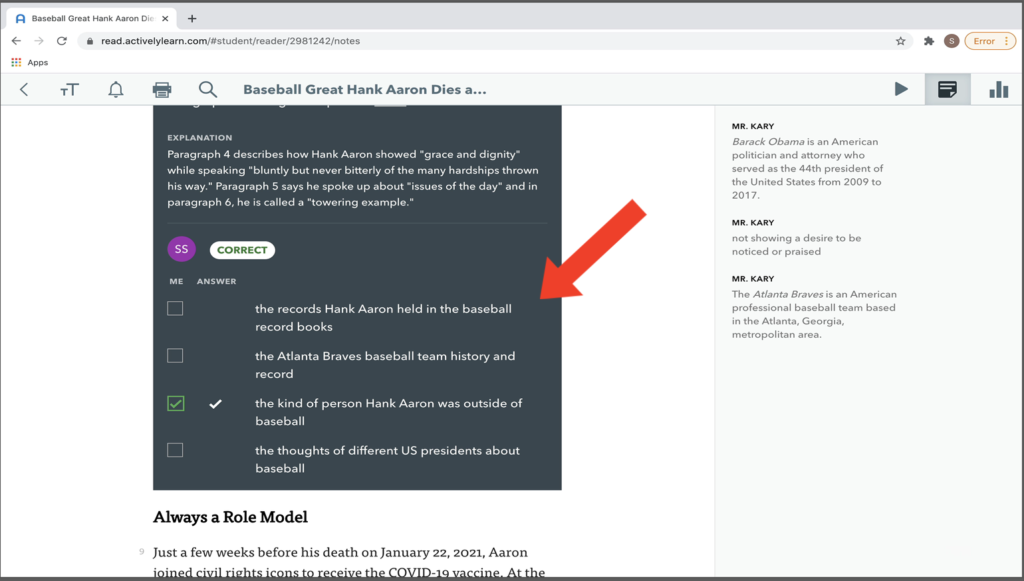
In addition to questions, students will also see highlighted words that students can click on to see notes from their teacher, and they can respond to those notes directly on the page.
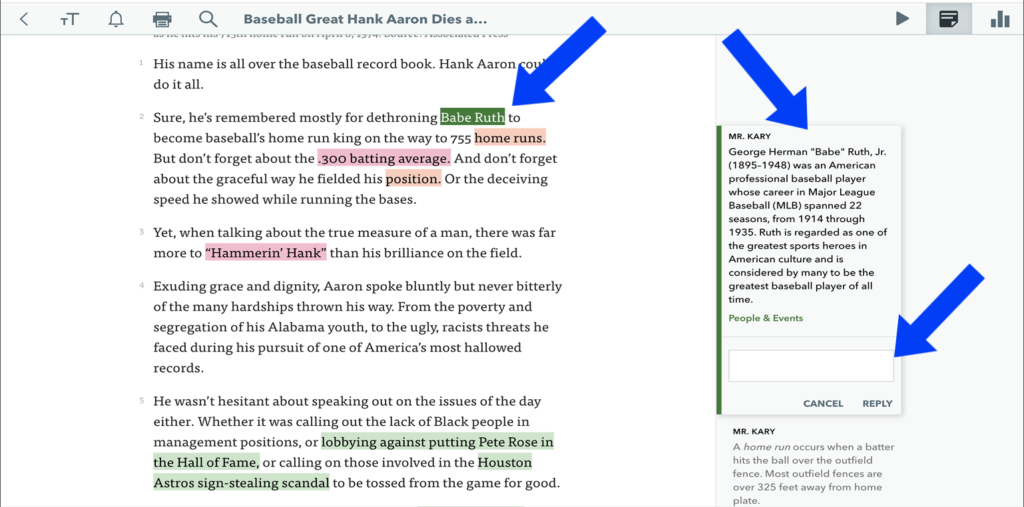
The entire text is also interactive. For example, students can highlight any word and choose to add a note, they can have the word read aloud to them, they can get a definition of the word, or they can choose to have a word translated into another language.
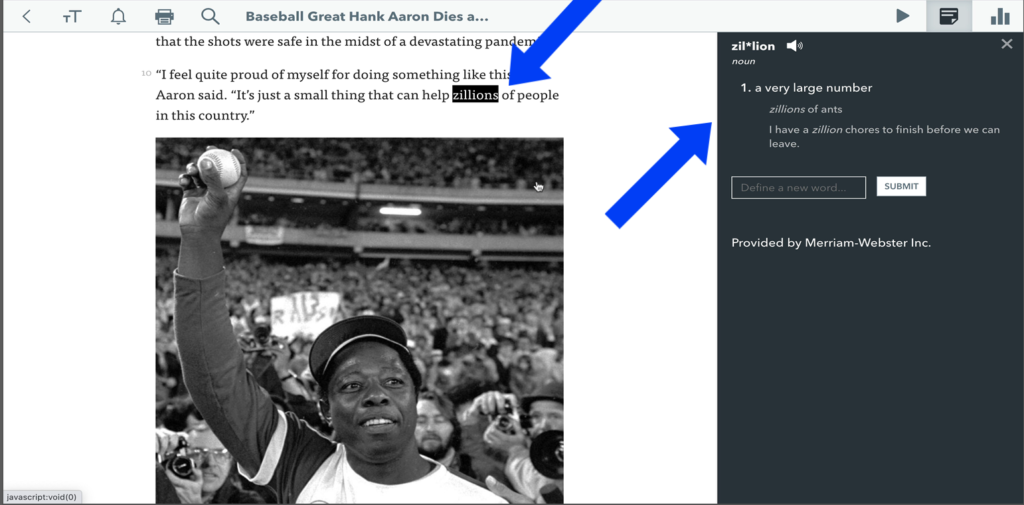
Actively Learn also has interactive videos that work similarly to a program like EdPuzzle, where students have to answer interactive questions in order to proceed through a video they are watching.
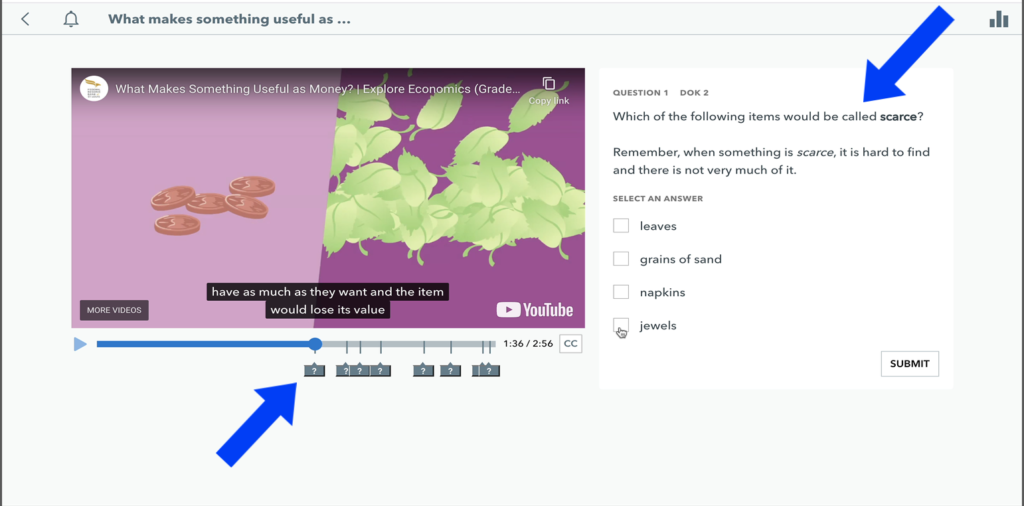
Actively Learn Accounts: Free versus Prime
You can create an Actively Learn account for free by clicking “Create Free Educator Account.”
From there you can sign up with Google, Clever, or Microsoft, or you can manually enter your information to sign up. Then, you’ll just need to enter your school information, and you can create a free account.

With a free plan you can create an unlimited amount of interactive reading assignments in ELA, Social Studies, and Science. Furthermore, you’ll have access to thousands of free articles, videos, etc., 3 text imports per month, and you can embed questions, notes, and media into an assignment. The free version also has an automatic grade book and a Google Classroom integration.
The prime version allows you to import unlimited texts as well as provides you with real-time data about student progress, and allows you to set up assignments for small groups, amongst other useful features.

Rostering Students in Actively Learn
Before creating and assigning interactive articles, you’ll need to add your class roster.
Next to “classes” click the “add” button and click “add new class.” One option is to “import courses from Google Classroom.”
If you don’t use Google Classroom, you can also just manually create a class.
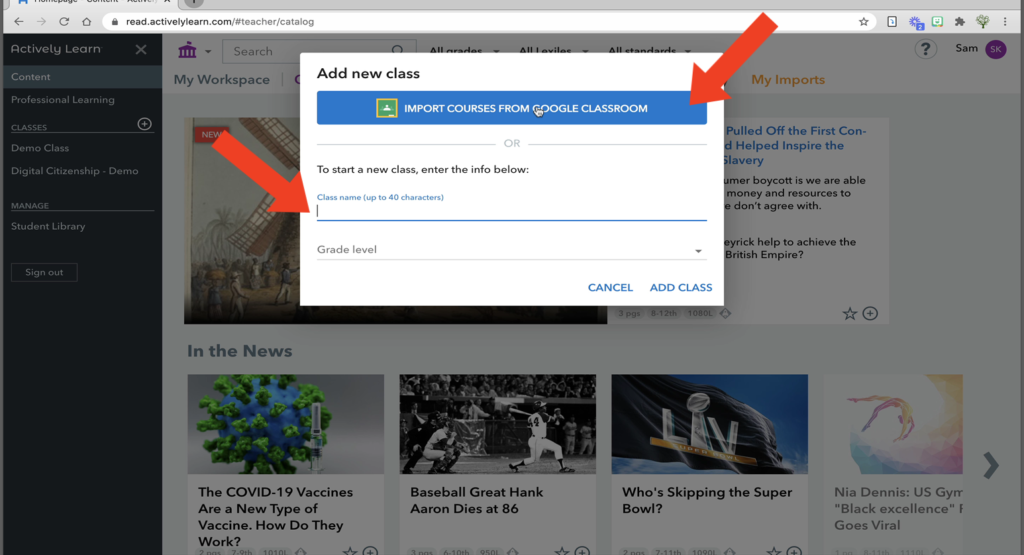
If you do sync your class through Google Classroom, you’ll just need to select which classes to import, select the grade level, and then click “import.” Then, students will just need to log in with their Google accounts to get in.
If you manually enter a class, you’ll just need to give students a class code they can use to sign in.
Once you’ve created your class, you’ll see a list of the students who have been added to your roster.
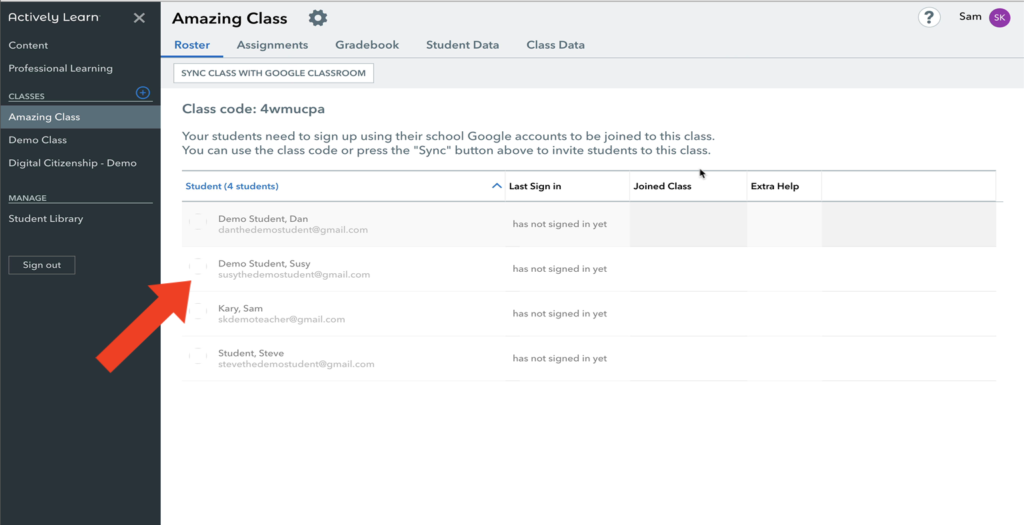
Creating and Assigning Interactive Articles in Actively Learn
Back on the Content dashboard, you’ll see that you have many ways to search for articles, including an open search, curriculum units, topics, and news & articles. If you have access to a Prime school account, you’ll also see a “school library” option. You can also filter articles based on grades, Lexile level, or standards.
Lastly, “my imports” allows you to bring in your own static texts and add interactivity features to them.
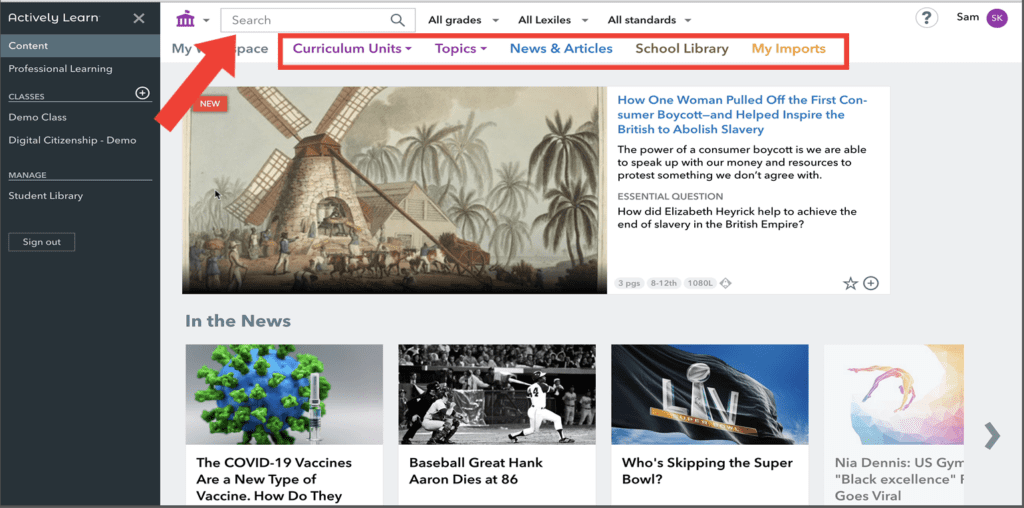
After clicking on an article, you’ll see that it gives you ideas for teaching the text on the right-hand side, as well as assignment directions at the top. If you have a Prime account, you’ll see an “extra help text summary,” but with a free account, that option won’t show up.

On the top left-hand side of the screen, you’ll also notice text settings that you can use to adjust the way the text appears on the page.
For example, you can change the text margins and spacing, the text size, you can choose from a few different font types, as well as change the background color. You can also choose whether or not paragraphs are numbered, which I like to leave on because it makes it easier to reference specific paragraphs in the text, and then lastly you’ll see that there are also dyslexic settings that will auto-adjust the font type, size, margin and spacing, and color.
To return the text to the way it originally was, choose “restore defaults.”
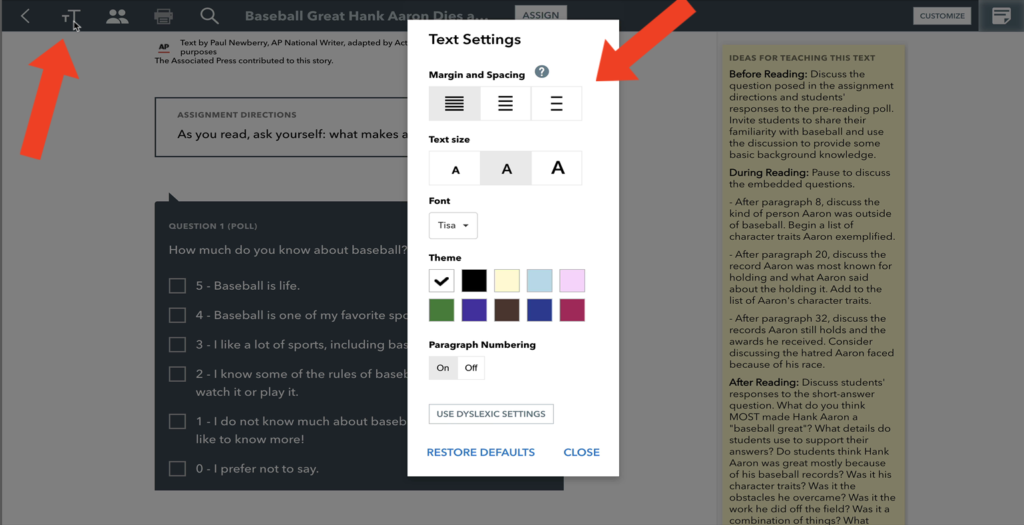
Next you’ll see that each article already has pre-written interactive questions, such as this opening poll question.
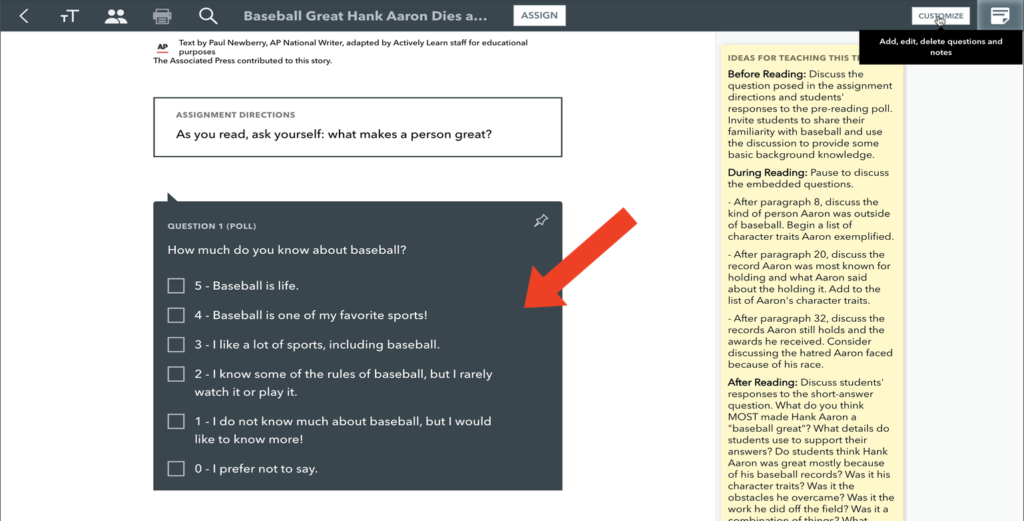
In addition to the pre-created questions, you’ll also notice that this article already has different words highlighted, and that each highlighted word corresponds to a pre-made teacher note that either provides students with definitions of words, or gives them additional relevant background information, such as this informational blurb about Babe Ruth.
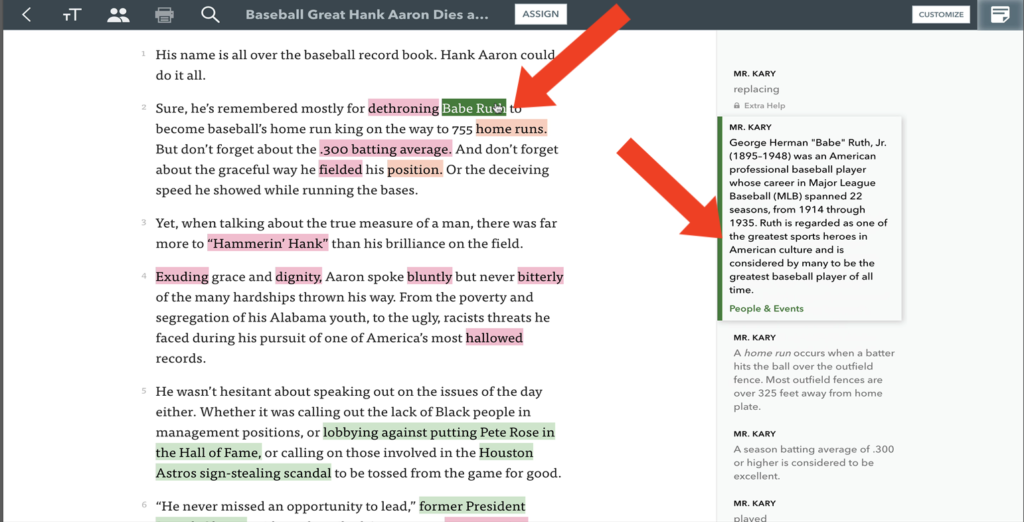
As you continue to scroll down the page, you’ll notice that there are additional pre-created interactive questions. This one is multiple-choice, and you’ll find pre-created open-ended questions as well.
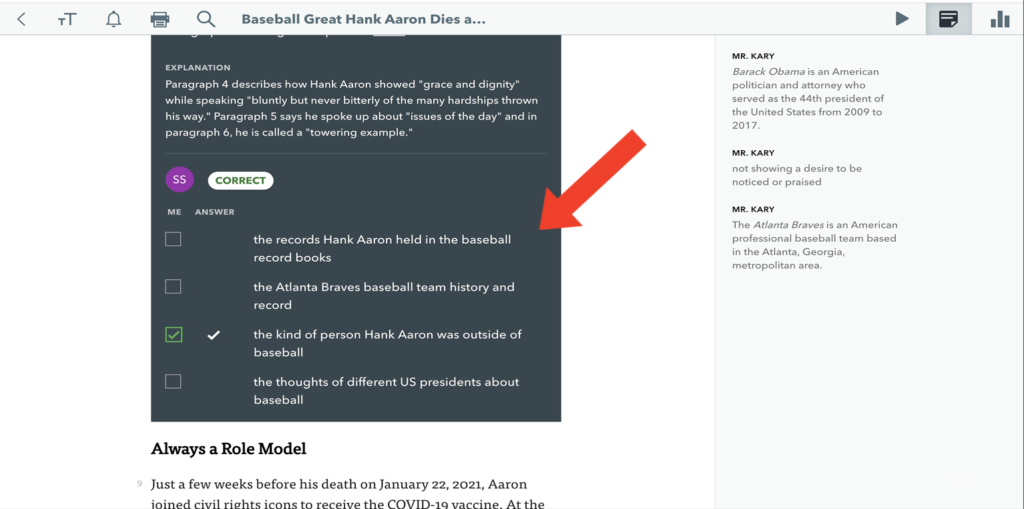
Editing Pre-Created Interactive Questions in Actively Learn
In addition to using pre-created notes and questions, you can also fully customize articles by clicking “customize.”
Once on the customizing screen, you’ll be able to customize an article pretty much any way you’d like.
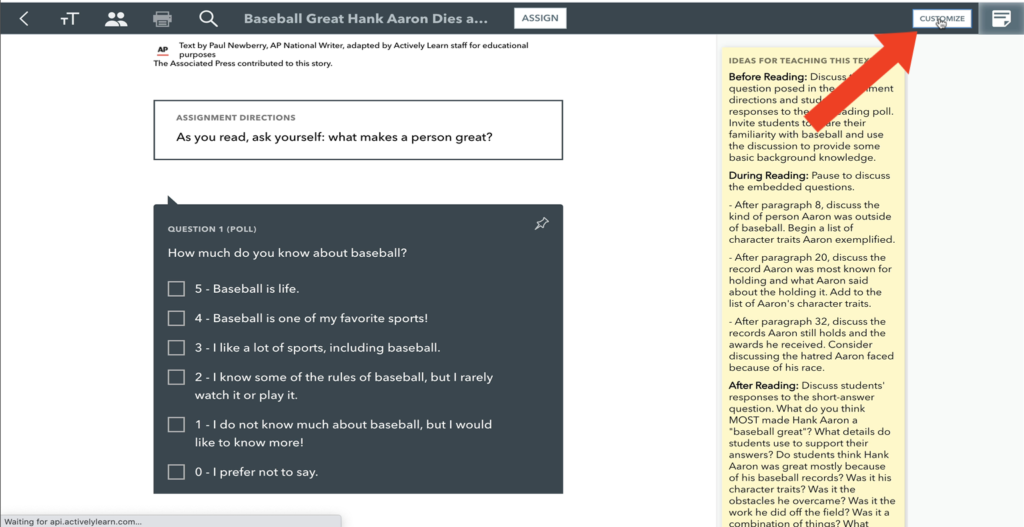
For example, you can edit the assignment directions at the top of the article to reflect your own instructions. Then, if you click on the three dots next to a question, you can delete it entirely, or choose “edit”to edit the question as well as the answer choices. You can even just quickly transition a question from a poll to multiple choice or short answer, or visa versa.
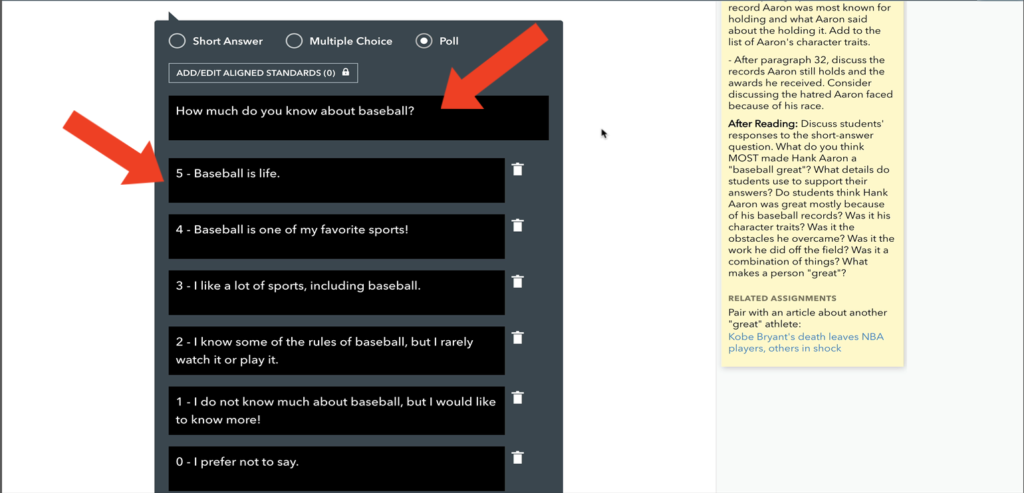
Similarly, if you click on a highlighted word in the text, you can also delete or edit the author’s note.

Creating Your Own Interactive Questions in Actively Learn
To add your own custom interactivity to the text, just highlight any word and choose an option from the dropdown menu.
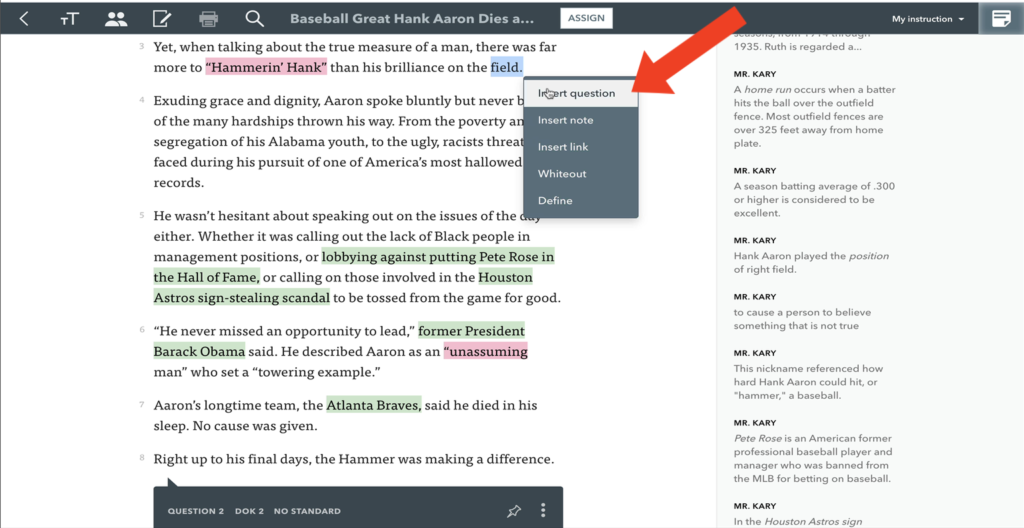
First, you can add your own questions by clicking “insert question.” There you’ll be given an option to add a short answer question, a multiple choice question, or a poll question.
For example, if you wanted students to make a connection you would just type out your question and then click “save.”
After you add a question, you’ll notice that it will prompt you to add a related standard, which you can only do with a Prime account.
If you want to write a multiple choice question instead, you’ll just need to write the questions and the answer choices, and to make the question more rigorous, you could also have students identify more than one correct answer.
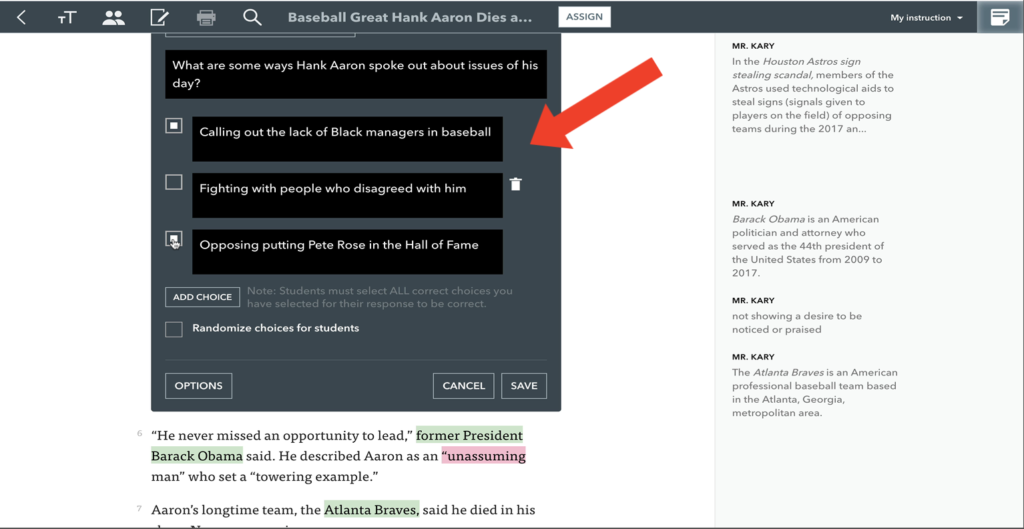
In addition to questions, you can also highlight the text and choose “insert note” to add your own custom author’s note on the sidebar.
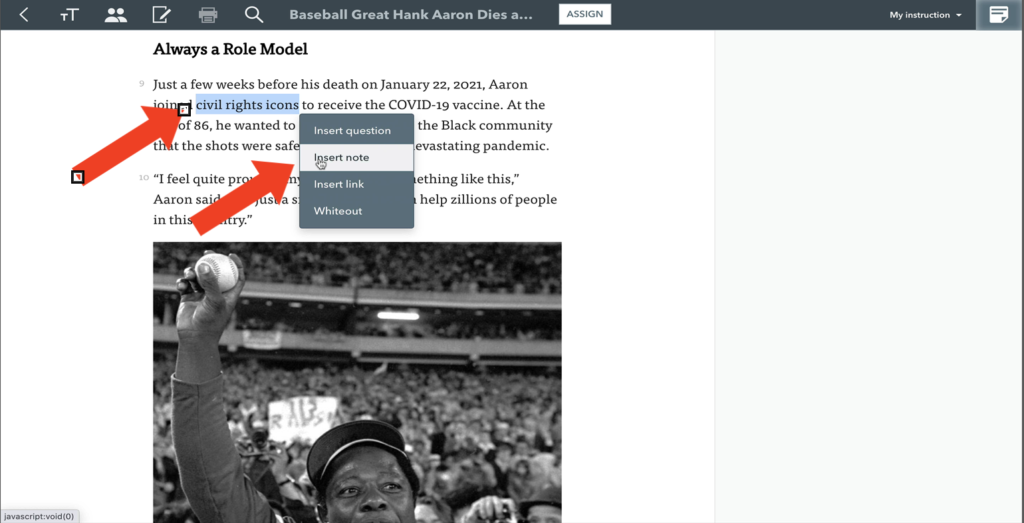
If you highlight the text and select “insert link,” you can copy and paste a relevant link in and that will turn that part of the text into an active hyperlink.
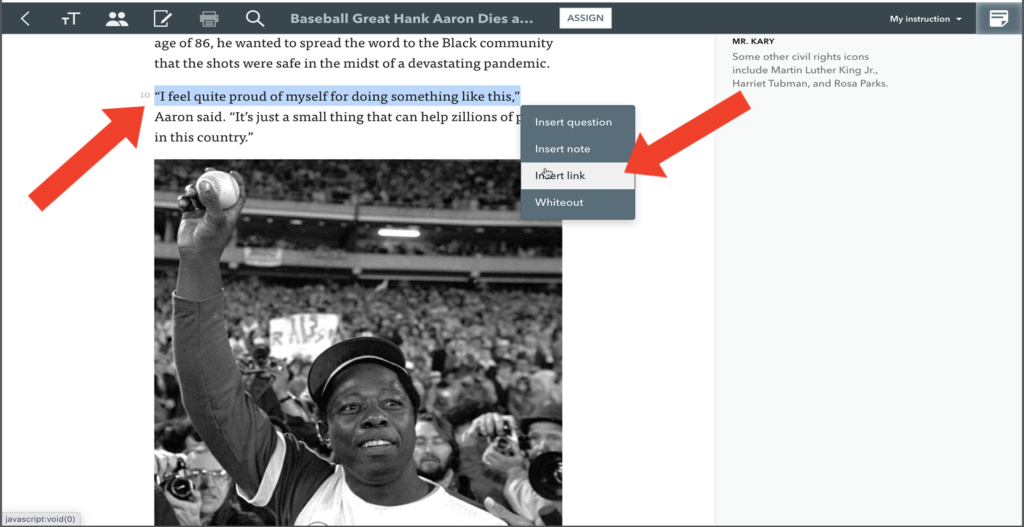
Once you’re done and you’re ready to assign the article, click “assign.” Choose the class you want to assign the article to, and then you can either give students the direct link to the assignment, or they will see it on their assignment dashboards when they log in.
Note that if you have a Google Classroom account and have synced it with Actively Learn, it will also post the assignment as a draft in Google Classroom that you can edit and assign if you’d like.
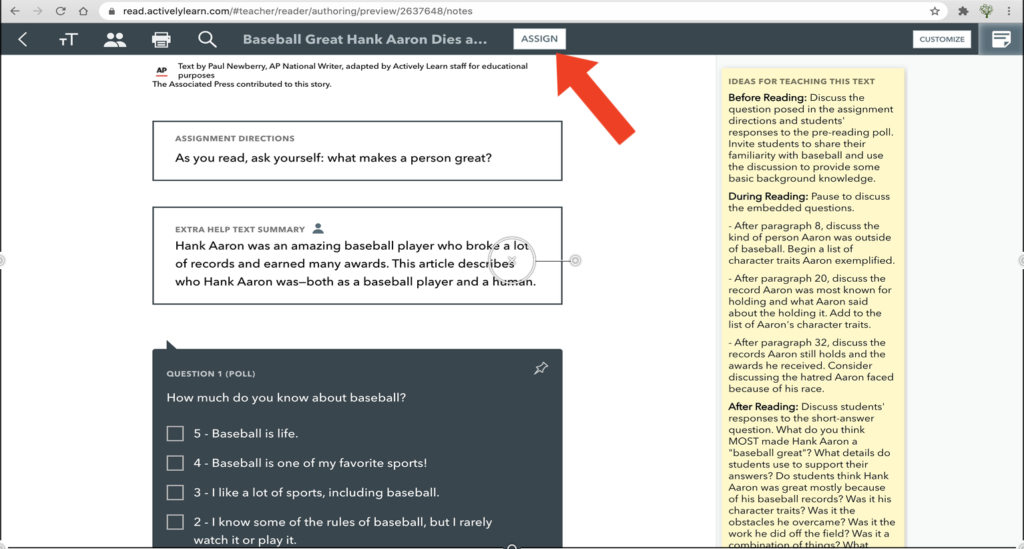
Import Your Own Content to Make it Interactive!
Although Actively Learn already has a large archive of content, you’ll likely also need to import your own resources from time to time, which you can do three times per month with a free account.
The ability to import your own content essentially allows you to turn any piece of content into an interactive lesson. You can import Internet articles, Google Docs, pdfs, create quizzes, and bring in videos and make those interactive too.
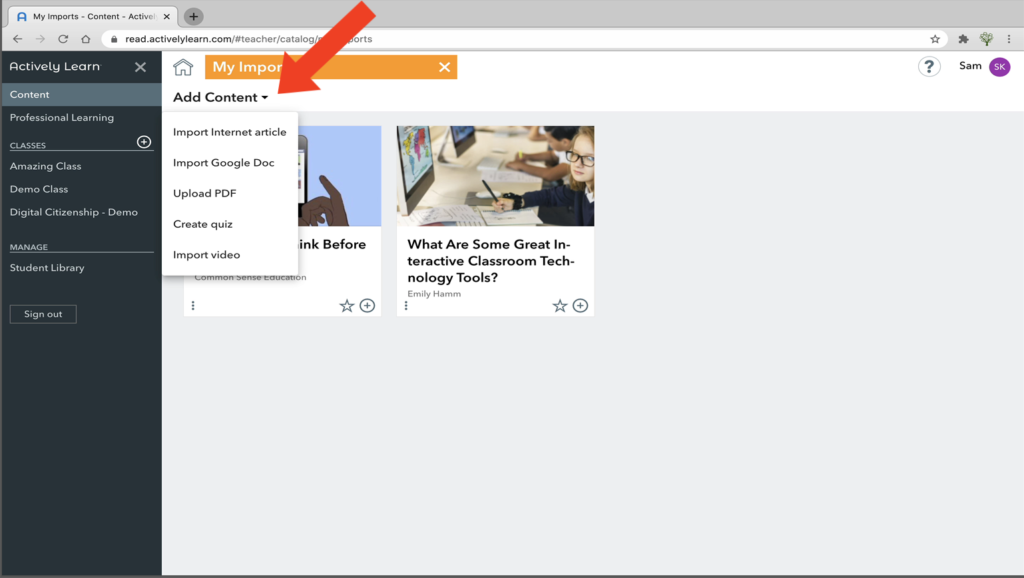
To import a web page article, you just need to copy and paste the url for an article you want to make interactive, click on it once you’ve imported it, and you’ll see that you have all of the same options to add interactive questions to the web page that you did with an article.

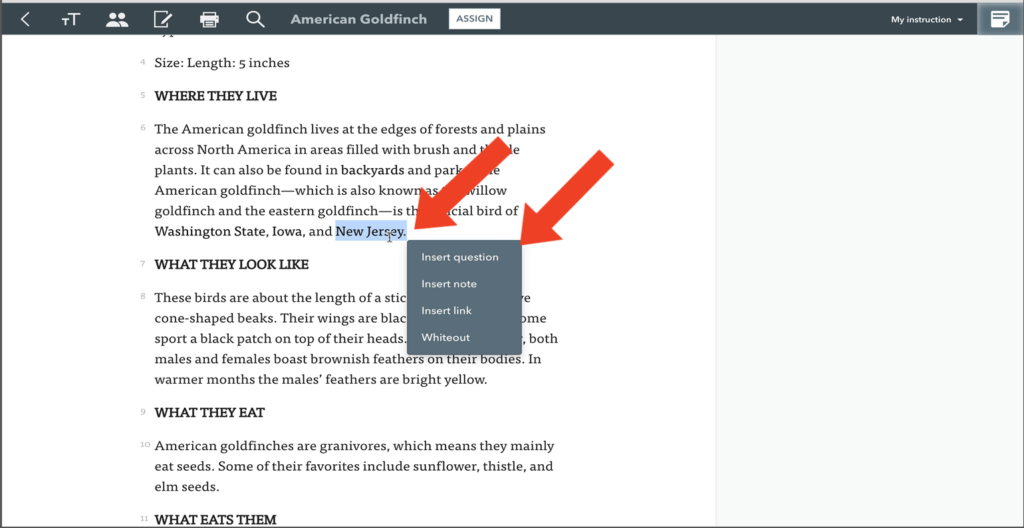
You can also bring in your own static .pdf files to make them interactive, though you don’t have the same flexibility as with articles or a web page. After you’ve chosen a .pdf file and uploaded it, you’ll still be able to add custom notes and hyperlinks to a .pdf by highlighting each word, but you can only add interactive questions to the end of a single .pdf page.
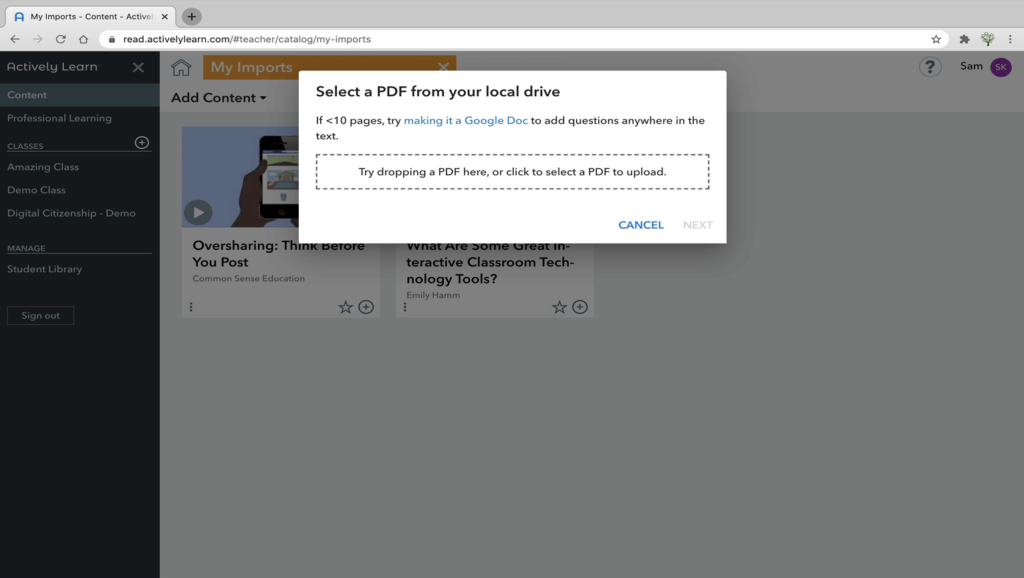
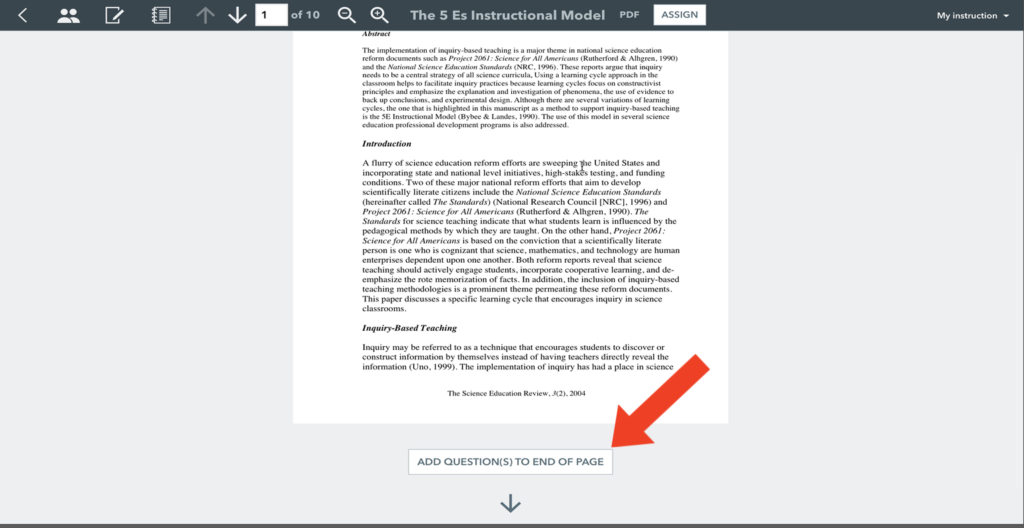
In addition to web pages and .pdfs, you can also import videos and add interactive questions to them, much like you can with programs like Edpuzzle.
Here, just copy and paste the url to a YouTube video you want to import and the video will show up as one of your uploads. When you click on it, you’ll be able to add the same types of interactive questions, short answer, multiple choice, and polls, that you can add to an article.
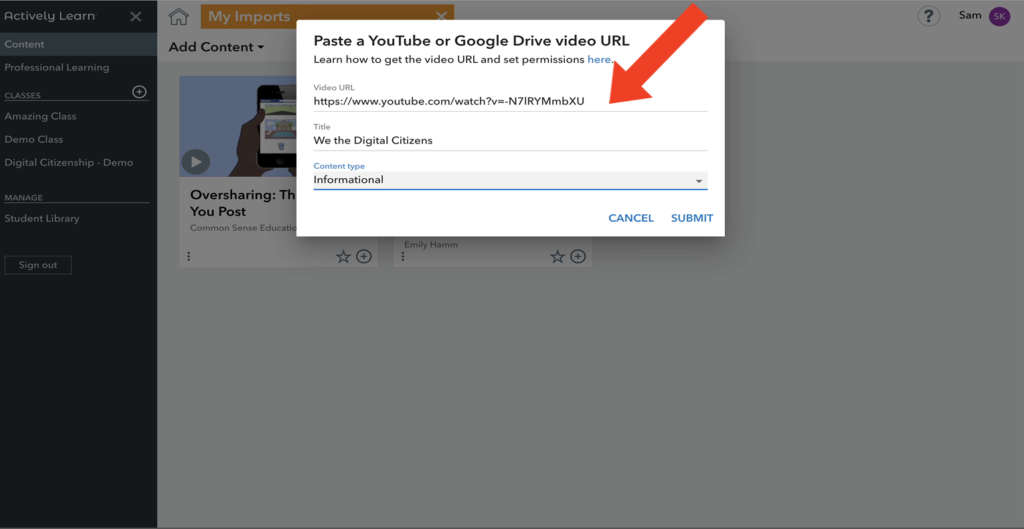
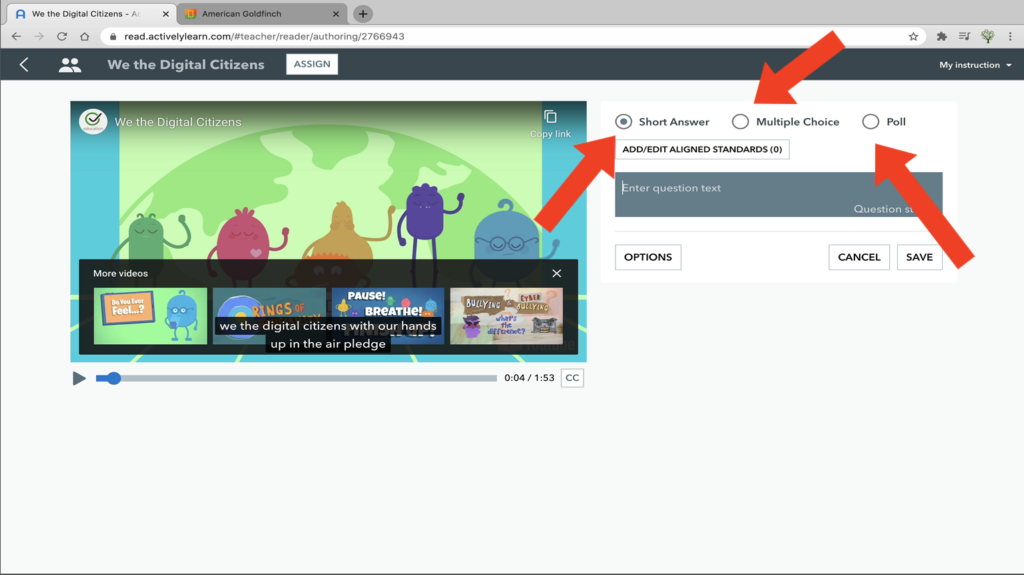
The Actively Learn Gradebook
To see how your students did on each assignment select your class and choose “Gradebook.”

If you choose an individual assignment you’ll be able to get a detailed breakdown of how students responded to different questions, as well as give them direct feedback. In addition to seeing how the entire class responded to each question you can also see how individual students answered each question.
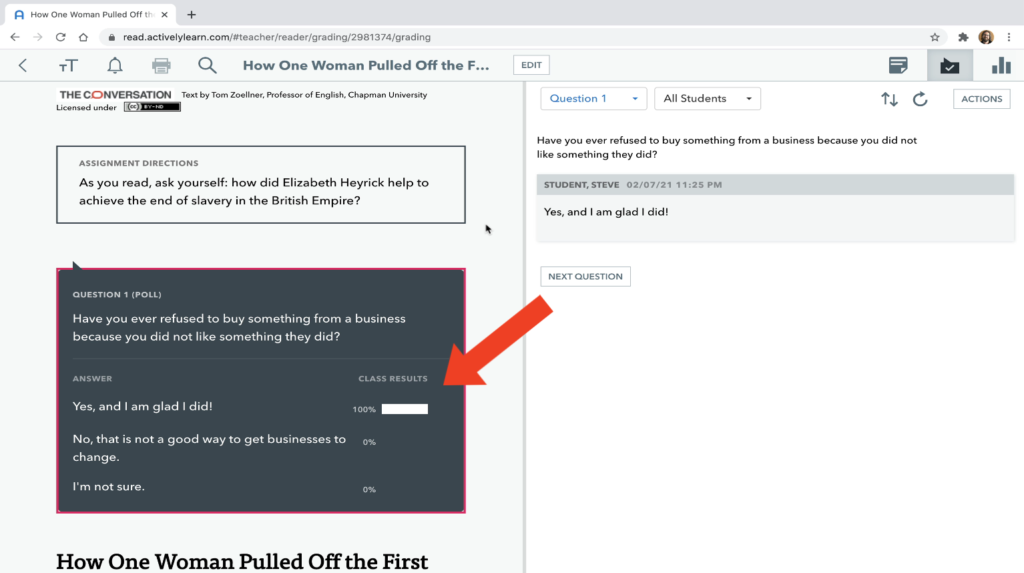
When you get to the short answer questions, you can give students a quick formative grade as well as leave them written feedback.
And if you want students to revise their responses and resubmit them, you can enable that function as well.
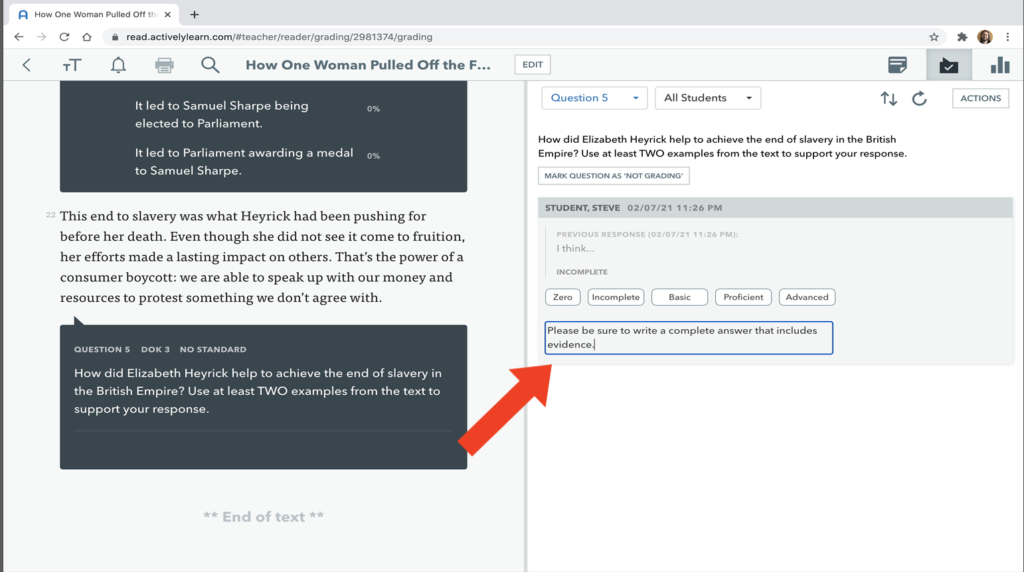
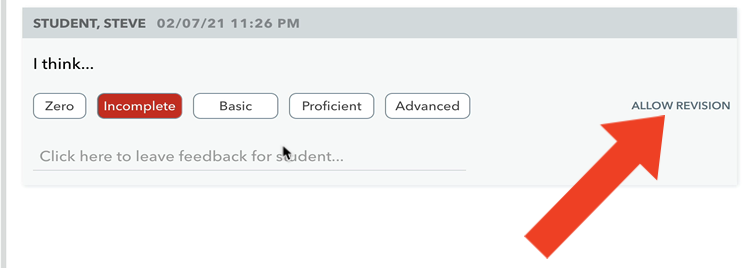
Conclusion & Resources
Actively Learn is a powerful program that helps teachers achieve what would be next to impossible without it: making every piece of content interactive. Transforming texts and videos from static to interactive learning experiences is one of the most clear ways technology can enhance be used to enhance instruction and improve educational outcomes for students.
For my take on how to take a strategic approach to remote teaching, click here.
For a comprehensive look at how to use technology to personalize learning, increase engagement, foster creativity, and more, click here.
To read more about why I believe technology must be a central part of public education today, click here.
Interested in the software I use to create my videos? Check out the links below! Many of these products offer a free trial to start and just clicking on the link helps to support The New EdTech Classroom!
Screenflow is a dynamic, intuitive video editing software that I use to create all of my YouTube videos. They’re currently offering a free trial! Get more details here.
I use Adobe Spark Post to design all of my YouTube thumbnails, as well as all my social media graphics. More information here.
If you’re interested in creating a website, these are a couple of programs I personally use and highly recommend: Bluehost is a web host that offers a professional platform for your website. You can check them out here.
Elementor is a powerful tool that helps with clean visual design for your website as well as marketing to further your website’s influence. More details here.

